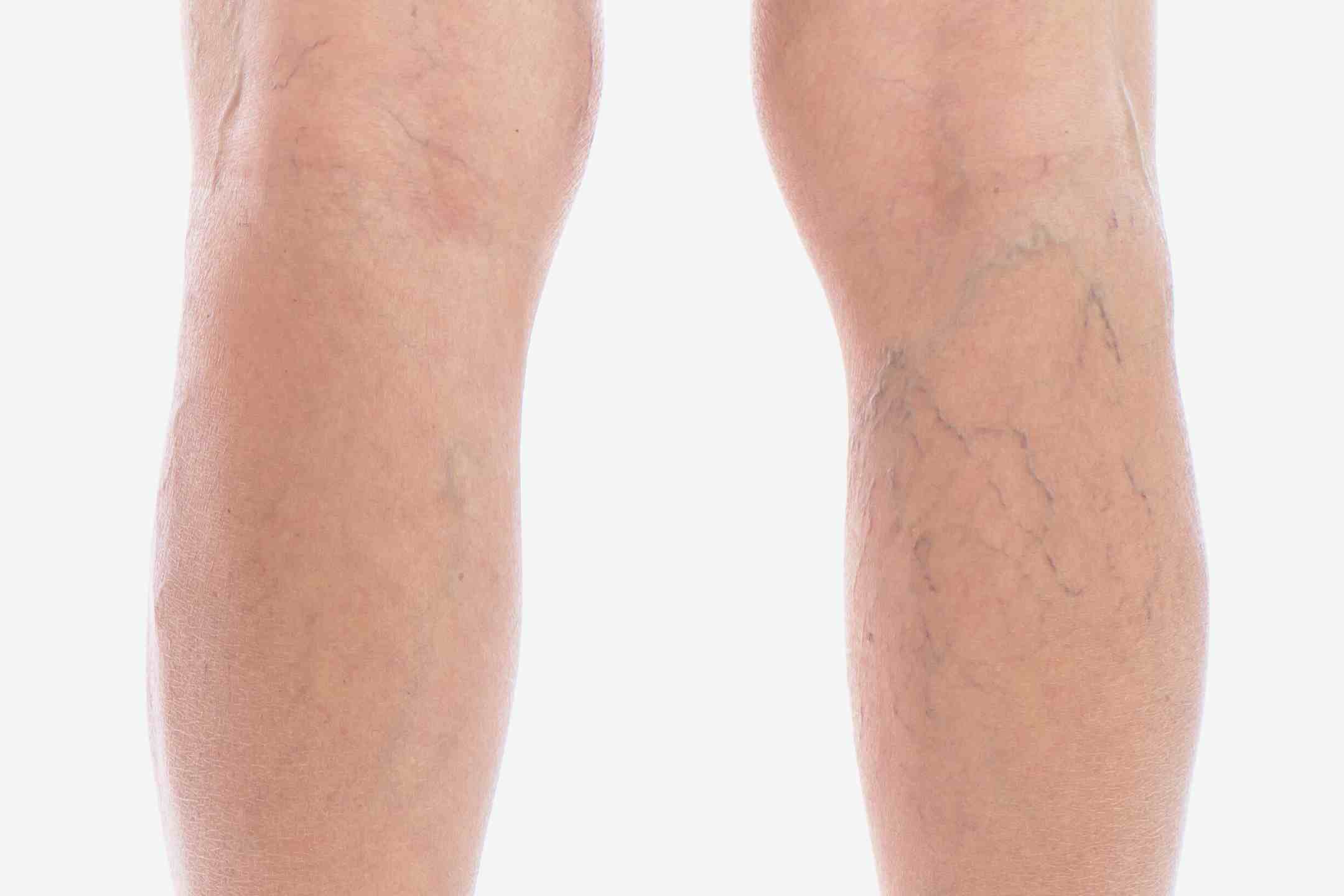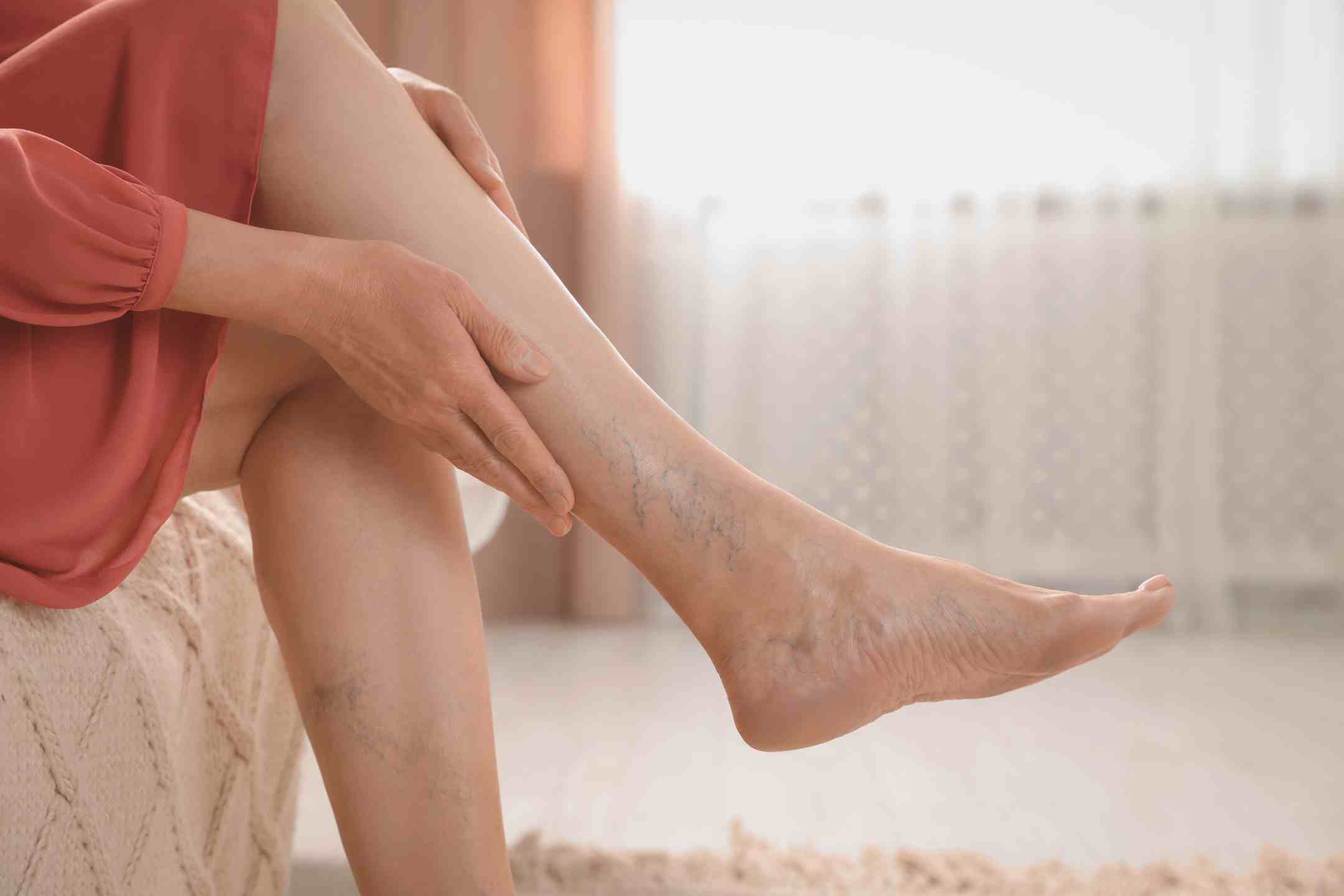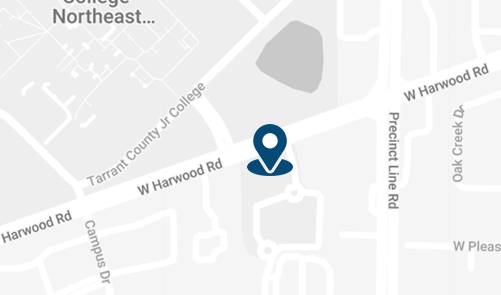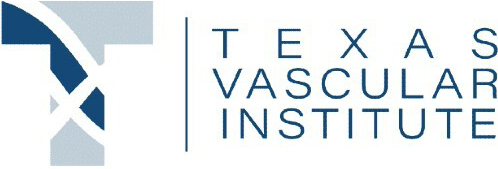By: Dr. Dev Batra | 06.10.25
Have your veins started looking different lately – darker, more visible, or even a little raised? It’s easy to second-guess what you’re seeing, especially when the changes happen slowly or seem to come and go.
In many cases, visible blue veins are completely normal. But when they start to bulge, darken, or feel uncomfortable, it may be a sign that your circulation needs a closer look.
In this post, we’ll walk through what causes blue veins to show up, which changes could signal a deeper issue, and what your treatment options are if those veins aren’t going away.
Why Do Veins Look Blue?
If blood is red, why do veins look blue?
The short answer? It’s all about how light interacts with your skin.
Veins carry deoxygenated blood back to the heart, which is darker in color than oxygen-rich arterial blood. But the reason they appear blue isn’t the blood itself – it’s the way your eyes perceive color.
Light penetrates the skin and reflects back at different wavelengths. Because blue light doesn’t travel as deep, your eyes interpret those deeper vessels as blue, even though they’re not really that color.

Other factors can make blue veins more noticeable:
- Skin tone and thickness: Lighter or thinner skin can make veins more visible.
- Body fat percentage: Less fat under the skin can bring veins closer to the surface.
- Temperature: Heat dilates veins, which can make them look more prominent.
- Activity level: Blue veins after a workout? That’s often due to increased blood flow and vascular pressure.
In many cases, visible blue veins are completely normal. But changes in their size, shape, or how often they appear can point to something more.
When Blue Veins Could Be a Warning Sign
Blue veins on their own aren’t unusual, but if they’ve started to bulge, feel heavy, or look more pronounced than before, it could be your body’s way of telling you there’s a circulation issue.
Conditions like varicose veins or chronic venous insufficiency (CVI) can cause blood to pool in your legs instead of flowing smoothly back to your heart. Over time, this pressure builds up and stretches your veins, making them twist, swell, and become more visible.
Here’s what to watch for:
- Bulging blue veins that look twisted or enlarged
- Aching, heaviness, or throbbing in your legs, especially after standing
- Swelling, particularly around the ankles
- Itching or burning near the vein site
- Skin changes like dryness or irritation around the veins
Changes like these can develop gradually, but they’re a sign that your veins may need treatment – and the sooner you take action, the better the outcome.

Color Changes You Shouldn’t Ignore
Blue veins are common, but when other colors start to show up it could point to more advanced vein disease.
Here’s what to look out for:
Purple Veins
Often a sign of early varicose or spider veins, purple-colored veins may be flat or slightly raised and usually come with symptoms like heaviness or itching.
Dark Blue Varicose Veins
When veins darken and bulge, it may indicate worsening vein valve function and poor circulation.
Red or Brown Skin Discoloration
This often shows up near the ankles and can signal long-standing venous insufficiency. It happens when blood leaks from weakened veins and causes inflammation in the tissue.
Rust-Colored Staining or Hardened Skin
A sign of chronic inflammation that can eventually lead to skin thickening or even ulcers if untreated.
Vein issues don’t always start with pain. In many cases, color changes are one of the first visible signs that something deeper is going on.
Learn more about skin discoloration and what it means for your veins.
If you’re noticing new or worsening discoloration, it’s time to have your veins evaluated – before symptoms become harder to manage.
How We Treat Diseased Veins
Today’s vein treatments are fast, effective, and minimally invasive with no surgery or hospital stay required.
At Texas Vascular Institute, we treat vein disease at its source using targeted, image-guided procedures that restore healthy blood flow and relieve pressure from the inside out.
Depending on your condition, treatment may include:
- Thermal vein closure – A minimally invasive procedure that uses radiofrequency energy to gently heat and seal off problematic veins, improving circulation and reducing symptoms.
- Ultrasound-guided sclerotherapy – Uses real-time ultrasound imaging to inject a special solution into deeper or hidden veins, causing them to collapse and fade over time.
- VenaSeal™ closure – A no-heat, no-scar treatment that uses a medical-grade adhesive to safely seal diseased veins, allowing blood to reroute through healthier ones.
- Microphlebectomy – A quick, in-office procedure that removes bulging varicose veins through tiny skin punctures, with minimal scarring and little to no downtime.
These treatments are quick, outpatient procedures with little to no downtime – and they don’t just relieve symptoms. They also improve circulation and help prevent more serious complications down the line.


Noticing Blue or Bulging Veins? Let’s Talk.
At Texas Vascular Institute, we specialize in diagnosing and treating vein conditions at their source with convenient locations in Hurst, Dallas, and Fort Worth.
If your veins are becoming more visible, uncomfortable, or hard to ignore, schedule a consultation to get the answers (and relief) you need.
Read more blogs
Embolization Procedure
Discover embolization procedures for non-surgical relief from knee pain, heel pain, and fibroids. Safe, effective, and fast recovery.
Find Relief Without Surgery
Find relief without surgery at Texas Vascular Institute. Minimally invasive vascular treatments, faster recovery, and compassionate care.
Uterine Fibroid Embolization
Learn how Uterine Fibroid Embolization (UFE) treats fibroids safely without surgery. Discover benefits, recovery, and if it’s right for you.
WHAT OUR PATIENTS
have to say
Texas Vascular Institute always appreciates feedback from our valued patients. To date, we’re thrilled to have collected 378 reviews with an average rating of 5 out of 5 stars. Please read what others are saying about Texas Vascular Institute below, and as always, we would love to collect your feedback.
Leave a Review
Amazing Practice
I'm very particular with my Healthcare and tend to be cautious with referrals to specialists. This office is amazing from the first point of contact. Their staff are friendly, professional and highly knowledgeable. Then the Dr is just as amazing as his staff, absolutely brilliant. Office manager Jessica has this office running like a well oiled machine and does so with a smile, an air of confidence, kindness and professionalism. Love this practice!!
- Richard G.

Beyond Thankful
Dr Batra and his staff are amazing! We are so grateful to have found him. Everyone is so kind and so caring and Dr Batra explains everything so well and does procedures with excellence. Beyond thankful to be under their care!!!
- Bitsy P.

Gold Standard
This is a gold standard for how a medical practice should be run. I was promptly seen at my scheduled time, my ultrasound was thorough and I received plenty of attention and care from the staff and Dr.Batra.
- Weronika L.
INSURANCE
We accept most major insurance plans. Please contact the medical office for all insurance related questions.









8330 Meadow Rd #100
Dallas, TX 75231
For Appointments: 972-798-4710
General Inquiries: 972-646-8346

809 West Harwood Rd, Suite 101,
Hurst, TX 76054
For Appointments: 972-798-4710
General Inquiries: 972-646-8346

4716 Alliance Blvd Suite #180,
Plano, TX 75093
For Appointments: 972-798-4710
General Inquiries: 972-646-8346

